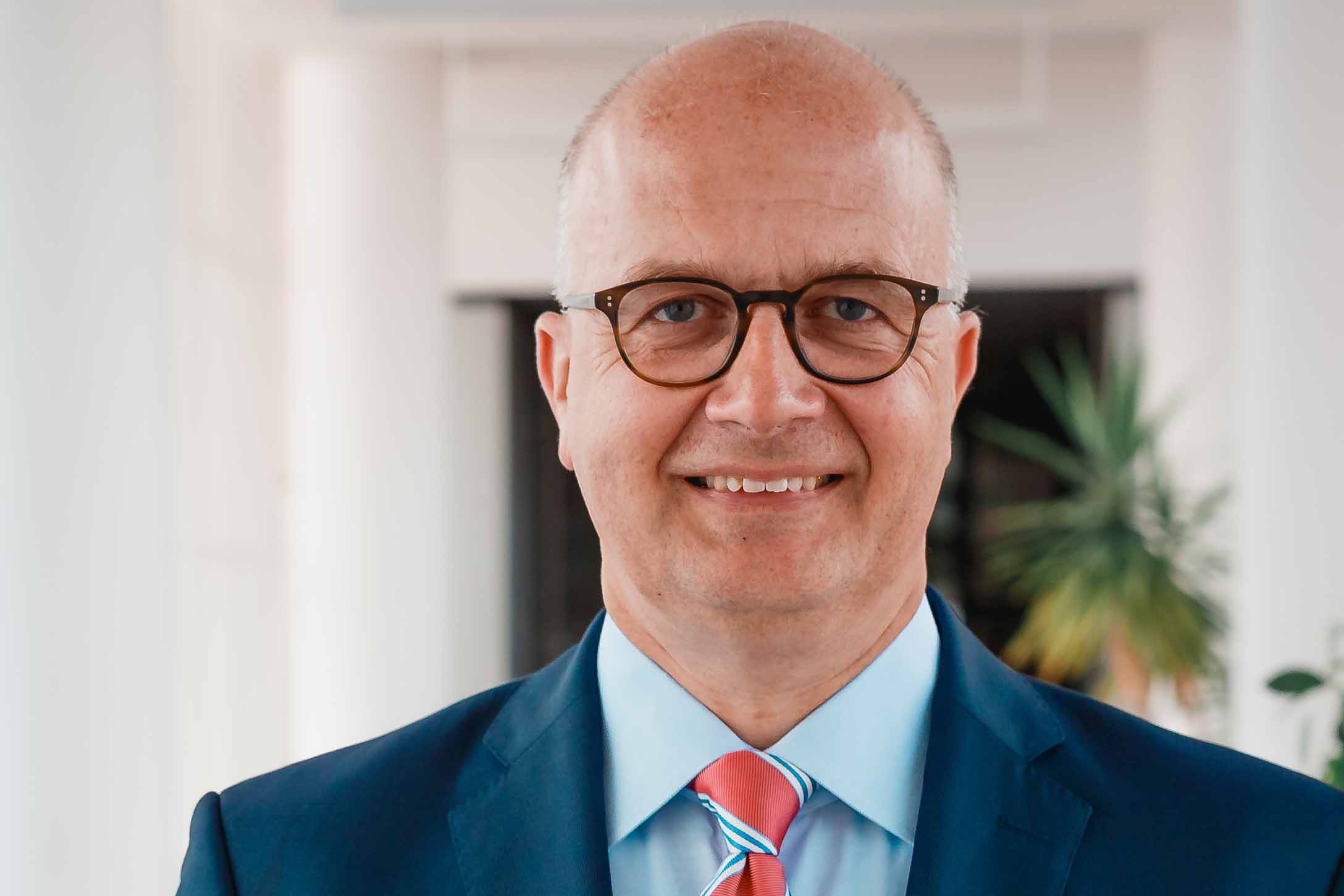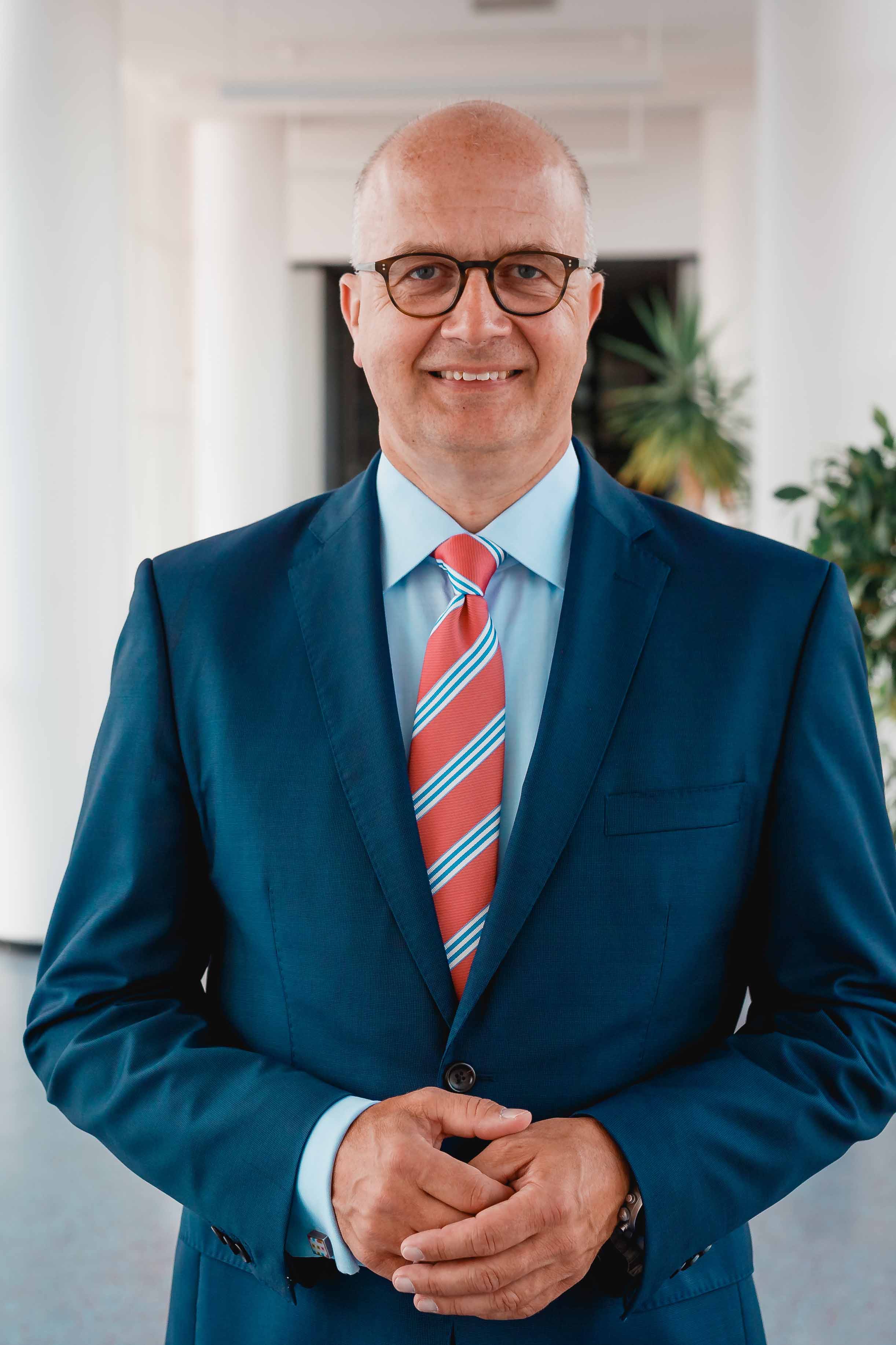Tata Steel: Green steel strategy for Europe
by Our guest commentary

marketSTEEL Interview Dr Henrik Adam, CEO Tata Steel in Europe
marketSTEEL: Green steel – this is probably the most dominant topic in the industry sector. Looking at Europe, how is Tata Steel positioned in this respect?
Dr Henrik Adam: We focus on reducing CO2 emissions as quickly as possible. Our motto is that every tonne of CO2 which is not emitted helps to limit global climate change. Tata Steel Europe is already one of the leading and most CO2 efficient steel companies worldwide. In 2020, our IJmuiden integrated steelworks has been the 3rd most CO2 efficient site worldwide that has reported numbers to worldsteel. Nevertheless, global CO2 emissions have more than doubled in the last 50 years and we as the steel industry are responsible for seven per cent of these emissions. We feel a strong sense of responsibility to decarbonise our operations at the same time producing the steel needed to help the rest of society to decarbonise. And our customers are also expecting it from us. Therefore, it is our goal to reduce our CO2 emissions in Europe by 30 to 40 per cent by 2030, to produce our steel CO2 neutral by 2050 at the latest, and to make steel which is stronger, lasts longer and needs fewer raw materials.
marketSTEEL: What strategies are being pursued to achieve that?
 Dr Henrik Adam: We have different long, medium and short-term strategies which interact to create the optimum result. Therefore we evaluate the risks and opportunities of climate change and these are integrated into our strategy and planning, capital investment reviews and risk management tools. We think that the decarbonisation of production will ultimately include the use of hydrogen. However, right now hydrogen technology is still in its infancy and has not yet gone beyond the level of small pilot plants. For this reason, we are also investigating options to increase the amount of scrap we use in steel production, for example. Another technology that will take effect much sooner is carbon capture, utilisation and storage. We see this as a transition solution until we have other technologies we can use, like hydrogen and direct reduction. Yet we need to save CO2 quickly – today and tomorrow and not in ten years' time.
Dr Henrik Adam: We have different long, medium and short-term strategies which interact to create the optimum result. Therefore we evaluate the risks and opportunities of climate change and these are integrated into our strategy and planning, capital investment reviews and risk management tools. We think that the decarbonisation of production will ultimately include the use of hydrogen. However, right now hydrogen technology is still in its infancy and has not yet gone beyond the level of small pilot plants. For this reason, we are also investigating options to increase the amount of scrap we use in steel production, for example. Another technology that will take effect much sooner is carbon capture, utilisation and storage. We see this as a transition solution until we have other technologies we can use, like hydrogen and direct reduction. Yet we need to save CO2 quickly – today and tomorrow and not in ten years' time.
marketSTEEL: Are there differences in the decarbonisation strategies at Tata Steel's plants in the Netherlands and the UK?
Dr Henrik Adam: There are crucial differences because we have to respond to the individual conditions of each site and location, for reasons of diverse geographies but also domestic carbon reduction plans. This are important factors for all steel producers. The fact that something fits very well in one place does not necessarily mean that it is optimal somewhere else. To stay with the CCUS example: In the Netherlands, Tata Steel is a partner of the Athos consortium which is aiming to create infrastructure to enable the use or storage of CO2 under the North Sea. While in the UK we are working with other partners to investigate both the capture and transportation of CO2 in South Wales. Our strategy for optimising energy efficiency is similar. Of course, this is important at every location, but the way to achieve it is different. In IJmuiden, for example, we have been feeding the cooling water from the site into a local waste heat distribution system since the beginning of 2021. In Port Talbot, we work together with the local power plant, where our process gases are used to generate heat and electricity. Nevertheless, we are also attacking alongside steel production itself. There is a lot of potential here that can be achieved far more quickly – even if such areas are currently less prominent in the public discussion.
marketSTEEL: What do you mean by “less prominent”?
Dr Henrik Adam: Of course it is right and important to decarbonise steel production. But it will take time, innovation and investment. Yet, at Tata Steel, we also look at the entire life cycle of our products. For example, the sectors transport as well as residential and commercial buildings account for a third of all global emissions. We know steel is key to achieving societal decarbonisation and as a steel company we are key suppliers to all the sectors which are trying to achieve this. So we have a vital role in helping them on their path towards a carbon neutral future. We can help make transport and buildings more climate neutral because we can partner with different industries. To be honest, it's what our customers are asking of us. And that's why our Life Cycle Assessment takes the entire journey of our product into account: when it's made, when it's used and when it has reached the end of its life.
marketSTEEL: And how is this actually implemented at Tata Steel in Europe?
Dr Henrik Adam: First of all, close coordination with our customers is the most important thing. This approach is clearly to be understood as a joint network. In addition, we address very different projects, for example in logistics. Last year, we launched our Zero Carbon Logistics framework that helps us decarbonise our supply chains. To get to this framework, Tata Steel’s outbound logistics spent over 1.5 years designing an emissions factor library. Now we have the opportunity to take both current and potential emissions into account. This allows us to map entire processes and identify emission hotspots. And that in turn allows us not only to provide customers with comprehensive knowledge, but also to draw our own conclusions. This results, for example, in new partnerships, such as with DB Cargo in the UK. Together, we are working on transporting our rail freight with trains that run on a low-emission biofuel called HVO, which can reduce CO₂ emissions by up to 90 per cent compared to conventional diesel. At the same time we are looking at increasing the size and weight of the trains so we can reduce the number of journeys required. Logistics currently account for four to five per cent of our CO2 emissions. In the decades to come, this represents a great potential for savings. And it is one that can already be realised now. However, with all the possibilities, we must of course also look at the costs. We are now creating a greater awareness of EU and UK emissions trading systems and how these drive carbon costs in steelmaking. Increasing shortages and rising prices of emission rights mean there is a need for steelmakers to deal with growing costs of carbon while also massively investing in a decarbonised future. In order to comply with the EU climate goals and to ensure sustainable EU and UK-based steel value chains for the future we need to pass these costs on.

